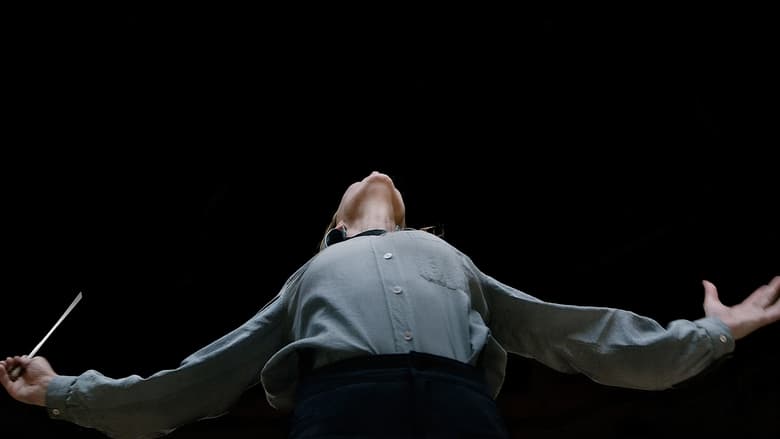
Introduction: The Intersection of Cinema and Classical Music
The film ‘Tár,’ directed by Todd Field and starring the esteemed Cate Blanchett, stands as a remarkable intersection of cinema and classical music. Released to critical acclaim, ‘Tár’ delves deep into the life of a fictional female conductor, Lydia Tár, brilliantly portrayed by Blanchett. The movie not only explores the intricacies of the classical music world but also underscores the challenges and triumphs faced by women in this traditionally male-dominated field. Blanchett’s powerful performance brings to life the nuanced experiences of women striving for excellence and recognition in the realm of classical music.
In the cinematic landscape, ‘Tár’ is significant for its authentic representation of the classical music industry. The film’s meticulous attention to detail, from the depiction of orchestral rehearsals to the exploration of the personal and professional lives of musicians, provides viewers with a profound understanding of this artistic domain. The film’s narrative is not merely a backdrop for the character’s journey; it is an integral part of the story, reflecting the complexities and pressures inherent in the world of classical music.
Moreover, ‘Tár’ is particularly relevant to the ongoing discourse about gender dynamics within the classical music community. Historically, the role of the conductor has been predominantly occupied by men, and women have had to fight for their place on the podium. Through Lydia Tár’s character, the film sheds light on the systemic biases and obstacles that women face, while also celebrating their resilience and talent. This perspective is crucial, as it encourages a broader conversation about inclusivity and equality in classical music.
As we embark on this in-depth review of ‘Tár’, it is essential to recognize the film’s dual impact: it is not only a piece of compelling cinema but also a significant commentary on the classical music world from a female perspective. This review aims to explore these layers, offering insights into how ‘Tár’ resonates with and challenges the traditional narratives within this artistic field.
Plot Overview and Key Themes
The movie ‘Tár’ presents a compelling narrative centered around Lydia Tár, portrayed masterfully by Cate Blanchett. As a renowned conductor in the classical music industry, Lydia’s character is intricately developed, showcasing her rise to prominence and the complexities that accompany her career. The plot navigates through Lydia’s professional and personal life, unveiling her relentless ambition and the power dynamics she navigates to maintain her stature.
One of the central themes of ‘Tár’ is ambition. Lydia’s journey is marked by her unyielding drive to excel in a predominantly male-dominated field. Her character epitomizes the challenges and pressures faced by women striving for recognition and respect in the classical music industry. Through Lydia’s experiences, the movie vividly portrays the sacrifices and ethical compromises often encountered in the pursuit of success.
Power dynamics play a significant role in the narrative, highlighting the intricate relationships between authority and influence within the classical music world. Lydia’s interactions with her colleagues, protégés, and superiors reflect the complex web of power relations that can both elevate and entrap individuals. The film delves into the consequences of wielding such power, portraying the fine line between leadership and exploitation.
Additionally, ‘Tár’ explores the struggle for recognition, a poignant theme that resonates deeply with women in classical music. Lydia’s character grapples with the constant need to prove her worth in an industry that often underestimates female talent. This struggle is not only professional but also personal, as Lydia balances her public persona with her private vulnerabilities. The movie sheds light on the broader issue of gender inequality, emphasizing the resilience required for women to carve out their space in this competitive arena.
Through its intricate plot and rich thematic exploration, ‘Tár’ offers a profound reflection on the experiences of women in classical music. The film’s portrayal of Lydia Tár’s character serves as a mirror to the real-world challenges faced by women striving for recognition and power in their careers, making it a resonant and thought-provoking narrative.

Cate Blanchett’s Performance: A Tour de Force
Cate Blanchett’s portrayal of Lydia Tár in the movie ‘Tár’ is nothing short of a masterclass in acting. Her performance is both compelling and nuanced, capturing the intricate layers of a character who is as complex as she is talented. Blanchett brings to life Lydia Tár, a renowned conductor navigating the demanding world of classical music, with a level of authenticity that is both striking and deeply resonant.
Blanchett’s acting prowess is evident in her meticulous attention to detail. From the subtleties of Lydia’s body language to the intensity of her emotional expressions, Blanchett ensures that every aspect of her character is portrayed with precision. This level of detail not only brings Lydia Tár to life but also adds a profound depth to the film, making it a compelling watch for audiences and critics alike.
What sets Blanchett’s performance apart is her ability to embody the challenges faced by women in the classical music world. Lydia Tár’s journey is punctuated by moments of triumph and adversity, reflecting the real-life experiences of many women in this field. Blanchett captures the essence of these struggles, portraying Lydia’s resilience, ambition, and vulnerability in a way that is both relatable and inspiring. Her performance provides a lens through which viewers can understand the unique pressures and expectations placed on women in classical music, making ‘Tár’ a film that resonates on a deeply personal level for many.
In summary, Cate Blanchett’s portrayal of Lydia Tár is a testament to her exceptional talent and dedication to her craft. Her performance not only enhances the film’s overall authenticity but also sheds light on the experiences of women in classical music, making ‘Tár’ a poignant and powerful cinematic experience.
The film ‘Tár,’ starring Cate Blanchett, delves deep into the representation of women in the classical music world, offering a nuanced portrayal of female musicians, conductors, and composers. Through its narrative, the film highlights the multifaceted roles that women play in an industry often dominated by their male counterparts. Blanchett’s character, Lydia Tár, a renowned conductor, is emblematic of the strides women have made in classical music. Her portrayal underscores both the triumphs and the tribulations that come with breaking glass ceilings in a traditionally male-dominated field.
The depiction of Lydia Tár serves as a mirror to the real-world experiences of women in classical music, reflecting both the progress and the persistent gender disparities. Historically, female conductors and composers have been marginalized, their contributions often overshadowed by those of male peers. However, ‘Tár’ illuminates the evolving landscape where women are increasingly taking center stage. The film’s narrative demonstrates the resilience and determination of women who navigate this challenging terrain, emphasizing their artistic brilliance and leadership capabilities.
Yet, ‘Tár’ does not shy away from presenting the ongoing challenges that women in classical music continue to face. The character encounters numerous obstacles, from subtle biases to overt discrimination, which resonate with the real-life experiences of many female musicians. The struggle for equal recognition and opportunities remains a critical issue, as does the need for more inclusive and supportive environments within the industry.
Moreover, the film’s portrayal of female camaraderie and mentorship highlights the importance of community and solidarity among women in classical music. By showcasing the supportive networks that help women thrive, ‘Tár’ underscores the collective effort required to foster gender equality in the arts. This aspect of the film aligns with the real-world initiatives aimed at empowering women in classical music, such as mentorship programs and advocacy groups that work tirelessly to create a more equitable industry.
In sum, ‘Tár’ offers a compelling and authentic representation of women in classical music, reflecting both the significant progress made and the challenges that persist. Through its intricate portrayal of female musicians, conductors, and composers, the film contributes to a broader conversation about gender equality in the arts, inspiring continued efforts towards a more inclusive and diverse classical music community.

The Power Dynamics and Gender Politics in ‘Tár’
The movie ‘Tár’ intricately examines the power dynamics and gender politics within the realm of classical music through the lens of its protagonist, Lydia Tár, portrayed by Cate Blanchett. Lydia’s journey as a woman in a position of authority is emblematic of the broader challenges that women face in leadership roles, particularly in male-dominated fields. Her character’s navigation through these complexities provides an insightful commentary on gender relations and power structures in the industry.
As the conductor of a prestigious orchestra, Lydia Tár wields significant influence and control, yet her authority is constantly scrutinized and challenged. The film meticulously portrays how her decisions and leadership style are often undermined by her male counterparts, who question her competence and assertiveness. This dynamic underscores the persistent gender biases that women encounter, even when they have reached the pinnacles of their careers.
The interactions between Lydia and other characters in the movie shed light on the intricate web of gender politics. For instance, her professional relationship with her male colleagues often reveals the underlying tensions and power struggles that characterize their interactions. The film does not shy away from depicting the subtle, and sometimes overt, ways in which sexism manifests, whether through dismissive comments, professional sabotage, or the expectation that Lydia must continuously prove her worth.
Moreover, Lydia’s interactions with female characters reveal another layer of complexity. These relationships are marked by a blend of solidarity and competition, reflecting the nuanced realities of women navigating a patriarchal system. The film poignantly illustrates how Lydia’s position of power can both empower and isolate her, as she strives to maintain her authority while contending with the systemic obstacles that come with being a woman in classical music.
In essence, ‘Tár’ is a profound exploration of the intersection of gender and power. It poignantly captures the multifaceted challenges that women in leadership face, offering a compelling portrayal of the resilience and fortitude required to navigate these dynamics in the world of classical music.
Music as a Character: The Soundtrack and Score
In the film ‘Tár,’ music transcends its conventional role, emerging as a pivotal character that shapes the narrative and resonates deeply with the audience. The soundtrack and score, meticulously crafted, serve not only as a backdrop but also as an essential narrative device that enhances the emotional and thematic depth of the story. Through its intricate compositions and well-chosen musical pieces, ‘Tár’ weaves an auditory tapestry that amplifies the protagonist’s journey, especially from the perspective of women in classical music.
The soundtrack, curated with a blend of classical masterpieces and original compositions, mirrors the protagonist’s internal and external conflicts. The score by renowned composer Hildur Guðnadóttir is particularly noteworthy, imbuing the film with an evocative soundscape that underscores the emotional gravity of pivotal moments. Guðnadóttir’s work, characterized by its hauntingly beautiful melodies and layered textures, aligns seamlessly with the film’s exploration of ambition, identity, and the personal cost of artistic excellence.
Key musical pieces featured in ‘Tár’ are not arbitrarily selected but are integral to the storyline. For instance, the inclusion of works by female composers such as Clara Schumann and contemporary figures like Missy Mazzoli highlights the often underrepresented contributions of women in classical music. These pieces not only enhance the authenticity of the film’s setting but also reflect the protagonist’s own struggles and triumphs within a traditionally male-dominated field.
Moreover, the deliberate use of silence and ambient sounds within the score adds another layer of complexity, allowing the audience to experience moments of introspection alongside the characters. This auditory strategy effectively heightens the dramatic tension and underscores the protagonist’s moments of vulnerability and strength.
By treating music as a character, ‘Tár’ achieves a nuanced portrayal of the protagonist’s world. The soundtrack and score do more than just accompany the narrative; they elevate it, providing a rich, immersive experience that resonates on both an emotional and intellectual level, particularly for those attuned to the nuanced dynamics of women in classical music.
Critical Reception and Impact on the Classical Music Community
The film ‘Tár,’ featuring Cate Blanchett, has garnered significant attention from both film critics and the classical music community. Critics have largely praised Blanchett’s portrayal of Lydia Tár, a fictional, renowned female conductor, for its depth and authenticity. Major outlets such as The New York Times and The Guardian have lauded the film for its nuanced depiction of the challenges faced by women in the male-dominated world of classical music. Blanchett’s performance, in particular, has been described as masterful, capturing the intricacies of a complex character navigating professional and personal conflicts.
Within the classical music community, the reception has been multifaceted. Many female musicians and conductors have expressed appreciation for the film’s realistic portrayal of their experiences. Notable figures, including Marin Alsop and Susanna Mälkki, have commended ‘Tár’ for shedding light on the persistent gender disparities and the subtle biases that women often encounter. The film’s willingness to address such issues head-on has sparked meaningful conversations about the need for greater gender equity in classical music.
The impact of ‘Tár’ extends beyond critical acclaim to influence public perception. By focusing on a powerful female conductor, the film challenges traditional stereotypes and highlights the potential for women to hold leadership roles in classical music. This representation can inspire young women to pursue careers in conducting and other high-profile positions within the field. Furthermore, the film has the potential to catalyze broader discussions about diversity and inclusion in classical music, encouraging institutions to re-evaluate their practices and strive for more equitable environments.
Overall, ‘Tár’ stands as a significant cultural work, resonating deeply with both critics and members of the classical music community. It not only offers a compelling narrative but also serves as a catalyst for change, highlighting the ongoing struggles and triumphs of women in classical music.
Conclusion: Reflecting on ‘Tár’ and Its Legacy
‘Tár’ offers a nuanced portrayal of women in classical music, spearheaded by Cate Blanchett’s compelling performance. The film delves into the complexities of gender dynamics within the traditionally male-dominated realm of classical music, highlighting the challenges faced by female musicians and conductors. Blanchett’s character navigates this intricate landscape, embodying both the triumphs and tribulations that come with breaking the glass ceiling.
The movie’s meticulous attention to detail, from the authentic representation of orchestral life to the intricate character development, underscores its commitment to presenting an honest depiction of the classical music world. ‘Tár’ not only entertains but also educates its audience about the often-overlooked contributions of women in this field. By showcasing the protagonist’s journey, the film amplifies the ongoing conversation about gender equality in classical music, urging both the industry and its audience to reflect on the existing disparities.
Moreover, ‘Tár’ has the potential to influence future portrayals of women in the arts. Its success may inspire filmmakers to create more stories that center on female characters in leadership roles within the artistic community. This could lead to a broader recognition of women’s achievements in classical music and beyond, fostering a more inclusive and diverse representation within the arts.
Ultimately, ‘Tár’ serves as a significant cultural artifact that champions gender equality and highlights the importance of diverse storytelling. Its impact on the perception of women in classical music is profound, encouraging a reevaluation of the roles and recognition afforded to female artists. As the conversation about gender equality continues to evolve, ‘Tár’ stands as a testament to the strides being made and the work that still lies ahead.








